by Ronald Palmer
In this authoritative overview of the state of play between the United States and Southeast Asia, Ambassador Palmer not only reviews developments in recent years, but assesses where relations stand as of the end of 2001. He is not overly encouraged. Finally, he examines U. S. relations with the region and its heavily Muslim population in light of Black September Eleventh. —Ed.
In the period 1947-1950. national security planners wrote clear policy guidelines intended to maintain the influence the United States had gained in Southeast Asia during World War II. Security was the primary U.S interest; other interests were congruent but secondary. National Security Council (NSC) planners were acutely aware that the former colonial states of the region, either newly independent or soon to be independent, needed to build state capacity. U. S. assistance was provided to governments that could maintain order and control local communists or other forces presumed to threaten that order. These governments tended to be authoritarian. as well as inheritors of traditional political cultures that were authoritarian, patrimonial or hierarchical.
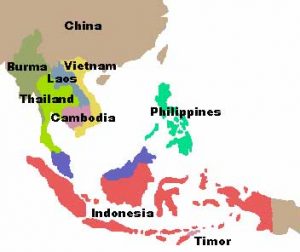 This suited U. S. Cold War policy. Our purpose was containment, and to this end, Southeast Asian authoritarianism was tolerated, even encouraged. We supported governments that supported us and our goals, interests, and purposes. The Southeast Asian counterparts of what political scientist Chalmers Johnson, co-founder of the Japan Policy Research Institute, has called the Northeast Asian “development states,” became objectives for eager American investors. Southeast Asia boomed even during, the Vietnam War, and after the fall of Saigon, from 1975 through 1990. market-oriented development in Singapore, Thailand, Indonesia, Malaysia, and the Philippines far outstripped Stalinist-style economic development in Vietnam. Laos, and Cambodia.As the Cold War ended, the United States shifted its strategic focus in Southeast Asia from security to economic issues. Free trade was the overriding goal of the George H. W. Bush administration (1989-1993). “Market access” and “market-opening” became the keywords of U. S. policy in the region, and that policy focused on the Asia-Pacific Economic Cooperation forum (APEC). However, the launching of APEC in 1989 overshadowed the slower pace of vigorous efforts by the Association of Southeast Asian Nations (ASEAN) to achieve economic integration and its own version of free trade.
This suited U. S. Cold War policy. Our purpose was containment, and to this end, Southeast Asian authoritarianism was tolerated, even encouraged. We supported governments that supported us and our goals, interests, and purposes. The Southeast Asian counterparts of what political scientist Chalmers Johnson, co-founder of the Japan Policy Research Institute, has called the Northeast Asian “development states,” became objectives for eager American investors. Southeast Asia boomed even during, the Vietnam War, and after the fall of Saigon, from 1975 through 1990. market-oriented development in Singapore, Thailand, Indonesia, Malaysia, and the Philippines far outstripped Stalinist-style economic development in Vietnam. Laos, and Cambodia.As the Cold War ended, the United States shifted its strategic focus in Southeast Asia from security to economic issues. Free trade was the overriding goal of the George H. W. Bush administration (1989-1993). “Market access” and “market-opening” became the keywords of U. S. policy in the region, and that policy focused on the Asia-Pacific Economic Cooperation forum (APEC). However, the launching of APEC in 1989 overshadowed the slower pace of vigorous efforts by the Association of Southeast Asian Nations (ASEAN) to achieve economic integration and its own version of free trade.
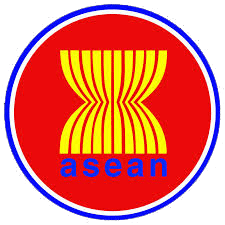 ASEAN, founded in 1967, was primarily a security arrangement that sought to promote closer relationships within the region. In colonial days, Southeast Asia had looked outward, to Western capitals. By the I96Os, however, it was seeking to develop closer intra-regional ties. ASEAN nevertheless was not and did not seek to be an organization like the European Community, in which members were prepared to sacrifice national interests to regional goals. The ASEAN nations were still guided, in most cases, by post-independence leaders for whom national integrity and national development were the highest priorities. Accordingly, economic nationalism was the preferred development strategy.
ASEAN, founded in 1967, was primarily a security arrangement that sought to promote closer relationships within the region. In colonial days, Southeast Asia had looked outward, to Western capitals. By the I96Os, however, it was seeking to develop closer intra-regional ties. ASEAN nevertheless was not and did not seek to be an organization like the European Community, in which members were prepared to sacrifice national interests to regional goals. The ASEAN nations were still guided, in most cases, by post-independence leaders for whom national integrity and national development were the highest priorities. Accordingly, economic nationalism was the preferred development strategy.
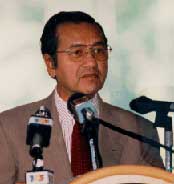
Some in ASEAN—notably Dr. Mahathir bin Mohamad, prime minister of Malaysia—felt strongly that the United States was hijacking ASEAN in pursuit of its own global purposes. Mahathir accused the United States of arrogantly paying little attention to, or even ignoring, the national aspirations of ASEAN members, as well as the organization’s own regional aspirations. ASEAN responded to the creation of APEC with its own ASEAN Free Trade Area initiative (AFTA) in 1990. In contrast with the quick movement toward free trade espoused by the United States in APEC, AFTA members envisioned a slower, more deliberate pace. The ASEAN countries were pursuing versions of economic nationalism, with significant sectors shielded from international competition by protectionism. Mahathir was seeking to launch a comprehensive program of heavy industry development in Malaysia, including local manufacture of a national car. He took the lead in voicing dissatisfaction with American policies that, he claimed, had among their purposes keeping Southeast Asian in neo-colonial dependence on the West.Mahathir declared the need for Asians to take control of their own economic destinies, rather than depend on America’s hegemonic leadership, by announcing the formation of an East Asia Economic Group—later modified because of American protests to an East Asia Economic Caucus (EAEC). The United States protested that it and Australia were to be excluded from the concept. A bitter, personal feud ensued between Mahathir and James A. Baker, the U. S. secretary of state. Mahathir’s estrangement from the United States was so severe that he would not accept a phone call from President Bush.
When the administration of President Bill Clinton took power in 1993, efforts were made to improve bilateral relations with Southeast Asian nations. Mahathir, however, pointedly passed up the 1994 APEC summit at Seattle, called by Clinton. By then the U. S. president had thrown the full weight of the United States behind APEC, and Mahathir prudently attended the organization’s 1995 Bogor meeting, in which Indonesia’s President Suharto committed APEC to a wide array of market reforms.
By 1995, the ASEAN region appeared to be making spectacular progress in economic development. The growth rates were illusory, however. They represented what Princeton University economist Paul Krugman described as the product of increased inputs making for increased outputs’ rather than the development of real increases in productivity. Looking back, perhaps the United States fell victim to the ” ASEAN illusion,” what the World Bank called the “ASEAN Economic Miracle.”
The United States appeared to regard Malaysia, Singapore, Thailand, and Indonesia in the same class as the stronger “development states” of Northeast Asia. South Korea and Taiwan had followed the Japanese economic development model These so-called development states had three characteristics in common: transformative goals, a pilot agency (e.g., Japan’s Ministry of International Trade and Industry), and institutionalized government-business cooperation. As Linda Weiss, political scientist at the University of Sydney, stated in her important essay on development states, published in Pacific Review 13 (2000), the Northeast Asian development states have resisted the convergence pressures of the United States to adopt development plans more closely resembling Anglo-Saxon, free-market models. It is not surprising that the less-developed Southeast Asian states have resisted, as well. Weiss emphasized that the Southeast Asian states did not meet minimal criteria as development states—i.e., they did not adopt transformative goals, establish pilot agencies or effectively design and implement policies to support widely shared national goals. Instead, Weiss wrote, Southeast Asian development was merely “a patchwork of poorly insulated yet highly interventionist states whose policies more often have sought ethnic, patrimonial, or other particularistic interests than to maximize national goals through a transformative project.”State capacity grew in Southeast Asia in the 1990s, but there also were profound institutional weaknesses, especially in banks and other financial institutions that were loosely regulated and vulnerable to short-term inflows of speculative capital. The ”one- size-fits-all” development policies of the United States in post-Cold War Southeast Asia had the unanticipated outcome of exposing the underlying vulnerabilities of the region’s weak state capacities. U.S. policies of market and financial liberalization facilitated an astonishing flood of short-term capital into the region, fueling an extraordinary boom from 1990 through 1995. By 1996, however, the inability to regulate such capital influxes was already apparent. The meltdown of the Thai currency in 1996 was followed by similar problems in Malaysia and Indonesia. Short-term capital investors ran for the exits.
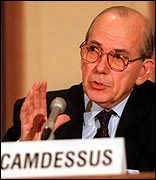
The United States was slow to react to the mounting crisis and followed free-market orthodoxy, expecting the market’s Invisible Hand to correct the problems. Placing its reliance on the International Monetary Fund (IMF), the United States vigorously avoided even the appearance of bailouts. From the U.S perspective, inadequate governance and lack of transparency had caused these problems, and there would be economic winners and losers. So be it. For some Asians, the photograph of IMF Chairman Michel Camdessus—looking down Iike a stern schoolmaster at the penitent Suharto, as the Indonesian president signed an IMF-prescrlbed reform agreement—seemed to symbolize the cold arrogance of the IMF and the United States.This standoffish behavior differed from the more supportive American policy in the Cold War. Then, U. S. policy goals were predominantly strategic and military. Economic goals were secondary. The United States had aimed to transform weak states into stalwart allies whose military strength would demonstrate the superiority of the Free World model. In short, American goals had been essentially political. In the 1997 crisis, however, the United States appeared to make political goals secondary to economic goals. Now, it appeared, American policy in Southeast Asia aimed to create a region modeled on Anglo Saxon liberalism, with expectations that the free market economic model also would lead to reforms in other institutions. This apparent policy, however, gave inadequate attention to the patrimonial, ethnic, rent-seeklng and power-seeking tendencies of Southeast Asian elites. And, while these elites often engaged in corruption and shared many characteristics that were unpalatable to American puritanism, they were the same elites that earlier American policies had helped create. As the Texans say, “You gotta dance with them that brung ya.” It was not surprising, therefore, that a chasm developed between the outlooks of American and Southeast Asian policymakers.
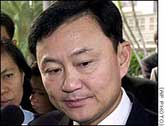
The electoral victory of Prime Minister Thaksin Shinawatra in Thailand last January was attributable in part to his populist and nationalist appeal against “foreign” (i.e., American) interference. In Malaysia, Prime Minister Mahathir took desperate measures to retain his personal political and economic control, including jailing Deputy Prime Minister Anwar bin Ibrahim in 1998. Mahathir has persisted in his economic nationalism, including making his cronies (and sons) “Malay millionaires.” Indonesia, of course, has been plunged into an ongoing political and economic security crisis that threatens the viability of that state.The United States did not cause these situations. However, the Southeast Asian perception that the United States was insensitive to local concerns has created an atmosphere markedly different from the comfortable relations that the United States previously enjoyed with ASEAN. ASEAN has begun a potentially historic turn toward Northeast Asia in the ASEAN Plus Three arrangements. To some extent, ASEAN has followed the lead of the United States in facing northward. Along with its free-trade economic policy in Southeast Asia after 1989, the United States paid great attention to cultivating better economic relationships with China and the Koreas.In the administration of President George W. Bush, however, we are likely to see a considerable shift in focus. A cadre of Japan and Southeast Asian experts has taken over the Asian policy-making posts in the Bush administration, replacing the predominantly China-oriented officials in similar jobs under President Clinton. Deputy Secretary of State Richard Armitage is an active proponent of improved cooperation between the United States and Japan and particularly supportive of the American-Japanese security relationship. Armitage also has a long history of involvement in Southeast Asia, including four tours of duty with the Navy in Vietnam. He led a vigorous but ultimately unsuccessful effort to negotiate the retention of U.S basing rights in the Philippines. Secretary of State Powell himself has a longstanding interest in Southeast Asia, including close ties with Malaysia. Jim Kelly, assistant secretary for East Asian and Pacific affairs, is well known in Southeast Asia from his annual participation in the Asia Pacific Round tables in Kuala Lumpur, sponsored by the ASEAN Institutes for Strategic and International Studies. Southeast Asianists also have been nominated for strategic positions at the Pentagon. Paul Wolfowitz, deputy secretary of defense, was U. S. ambassador to Indonesia and one of the founding co-chairmen of the U. S.-Indonesia Society. Dov Zakheim, undersecretary of defense and chief financial officer of the department, was co-chairman (with former senator Bob Kerry of Nebraska) of the Council on Foreign Relations (CFR) Task Force on Southeast Asia, whose critical report on U.S. policy in the region during the Clinton era was released in June 2001.
These officials may not fashion striking changes in policymaking toward Southeast Asia, but their appointment does indicate some dissatisfaction with recent U. S. policy toward the region. One of the interesting manifestations of this discontent with U.S. Asian policy was the split in the views of American and Southeast Asian participants in the Asia Foundation study “America’s Role in Asia” released last February. Asian experts from the United States concluded that the existing “Northeast” focus of American policy is about right, Only two of their thirteen recommendations concerned Southeast Asia—supporting Indonesian attempts to maintain unity and encouraging ASEAN to find ”institutional balance.” As Michael Armacost, president of the Brookings Institution, coolly observed in presenting the study: “There is no crisis in Asia, and the United States can turn its attention to Europe and the Middle East.”As a member of the CFE Southeast Asia Task Force, I do not agree with Armacost’s sanguine assessment, nor do I agree with the American viewpoint expressed by the Asia Foundation task force. The United States and Southeast Asia are drifting apart. I believe the drift began with the slow U.S. response to the financial crisis of 1997. The CFR task force’s draft report states in part, “American influence in the region has waned as a result of: a mix of inattentiveness and imperious hectoring; and the perception if not reality of a belated and inadequate response to the traumatic 1997 financial crisis. In addition an American preoccupation with developments in East Timor distorted its overall approach to Indonesia and may have distracted policy makers from focusing on broader regional concerns. This was exemplified by our seemingly lackadaisical attitude toward Chinese encroachments in the South China Sea in 1995 and again in 1999.”
This is strong language, but it is congruent with the views of the Southeast Asian experts who contributed to the Asia Foundation report. In general. Southeast Asians believe that the United States does not pay enough attention to their region, and they often refer to American policy toward Southeast Asia as one of “benign neglect” or “indifference.” In their overview of the United States’ policy, the Asia Foundation experts from southeast Asia expressed opinions diametrically opposed to those of the American experts. The Southeast Asians cited the destabilizing forces of globalization in the region and the threat of American indifference to the Asian balance of power. They stated that the positive involvement of the United States was needed in Southeast Asia to maintain regional stability and security, maintain an open U. S. market for Asian exports, promote regional cooperation for broad-based growth, and encourage good governance.
The Southeast Asians do not explicitly express their fear of China, but such concern is strongly implied. “Southeast Asia wants to see balanced and stable relations among China, Japan and the United States, without any one country dominating the region,” they stated in “America’s Role in Asia.” “There is concern that if this balance is threatened, Southeast Asia will become polarized as it was during the Cold War, something none of the member ASEAN countries view as in their interests.”![]()

Ron Palmer, a retired career diplomat, served as U. S. ambassador successively to Togo, Malaysia, and Mauritius, in addition to other senior positions in Washington and abroad during his thirty-two year Foreign Service career. A member of the American Diplomacy Publishers board, he is now professor emeritus at The George Washington University in Washington, D. C.
